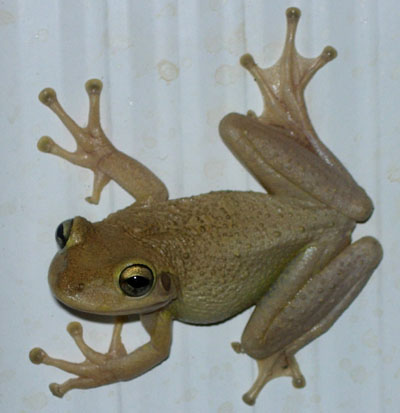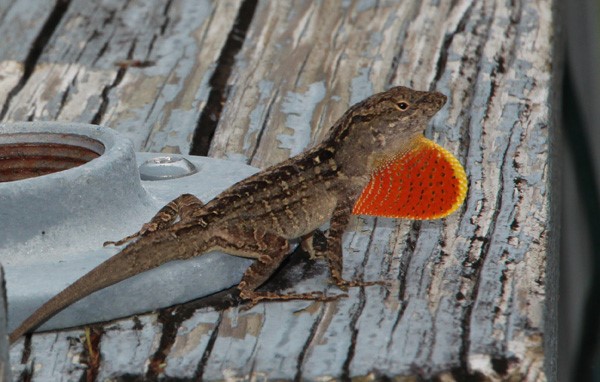This one will be harder.
I say this for a couple of reasons.
First, the invasion seems to be silently spreading. A just a couple of years ago we had very few records, one off individuals that were removed by those reporting. But they have slowly, and quietly, been spreading. A couple of years ago there was a report of a small group of them near Tyndall AFB in Panama City. Dr. Steve Johnson, University of Florida, decided to see if this small group survived the winter, they did. It was confirmed as the first breeding population in the panhandle. Then the one off reports began increasing again.

One area in Santa Rosa County was recording numerous individuals. These reports continued over the winter, and it seems they were breeding there as well. In my neck of the woods, Pensacola, I am getting more calls about them. EDDMapS currently list 18 records in the panhandle. This is definitely underreported. Most of those are in the Panama City area. The entire invasion reminds me of the Cuban (Brown) Anole; quietly increasing numbers while we watch and wonder what to do.
Second has to do with that issue… what to do. Managing invasive plants seems to be easier that invasive animals. People seem to be fine with pulling or spraying weeds. But euthanizing animals is another thing. And I get it, I like frogs too. Ending any life is hard to do. This makes managing this species much harder.
One way to look at next steps is to stop the introduction of any more species. We are pretty sure the primary method of introduction is what we call “hitchhiking”. Most of the plants we purchase for our landscaping projects come from large commercial nurseries in south Florida. Here they are grown by the hundreds of thousands, loading on trucks, and brought to our part of the state. Unbeknown to us, other small creatures are hitchhiking on these plants and their containers. Some of these are invasive species like the Cuban (Brown) Anole, and the Cuban Treefrog. At one time, this was not as much of a concern because they would not survive our cold winters. But our winters are not as cold anymore. Hard freezes do occur, and this may still be our best management plan, but with fewer hard freezes breeding populations will be allowed to continue the invasion. And it could be that with higher numbers of Cuban Treefrogs in the area, some will survive these freezes to continue. This has certainly happened with the Cuban (Brown) Anole.

So, I am not sure. The answer may be no to this one. One thing we can do is help monitor their populations. When we see a Cuban Treefrog report it to EDDMapS or your county extension office. This will give us a better idea of how the invasion is going and whether they are surviving our winters.
How do you know a Cuban Treefrog from our native species. Here are a couple of articles on how to do this.
https://edis.ifas.ufl.edu/publication/UW259.
https://ufwildlife.ifas.ufl.edu/frogs/cubantreefrog.shtml.
If you choose to euthanize them, how do you do this humanely?
You can catch them using 3-foot sections of PVC pipe about 1.25” in diameter. These are placed vertically in the ground along the outside wall of a building near an exterior light source (where bugs are attracted). In the morning, check the inside of the pipes. If treefrogs are present, try to identify them. Cuban Treefrogs are the only ones in the panhandle that reach lengths of 4-6 inches. If they are all small, you will need to collect them and identify them using one of the publications listed above.
If you positively identify one, the first step is to confirm it. You can do this by contacting your county extension office. Second, report it to EDDMapS (www.EDDMapS.org). If confirmed, and you choose to euthanize it, the following link will explain how to do this humanely.
This situation is similar to the lionfish invasion we experienced 10 years ago. We know they are here, and we know they can be a serious problem. We are not sure we can eradicate them, but they should be managed. We will see how this goes.
- Pensacola Bay Invasive Species Summer Survey 2025 - November 3, 2025
- Our Environment: Part 24 – Our Changing Climate - November 3, 2025
- Our Environment: Part 23 – Hydrogen as an Energy Source - October 29, 2025
